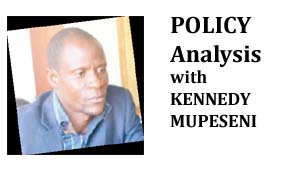THE pronouncements by the Government and mining companies during the just-ended Invest in Africa Mining Indaba has brought the highest optimism in the mining industry and the economy at large.
Since the coming in of the United Party for National Development (UPND) administration, there is no doubt that foreign investors have been viewing Zambia as a favourable investment destination.
Optimism by stakeholders in the mining industry keeps on rising following the continued announcements of pipeline investments.
The mining sector is poised for an historical boom.
From the look of things Zambia may be home to the world’s third-largest copper mine following the announced discovery of huge copper deposits at Mingomba by KoBold Metals.
During the same Indaba in South Africa, Bill Gates-backed KoBold Metals announced the discovery of huge copper-rich Mingomba exploration projects promising to invest US$2 billion as Barrick Corporation is envisaged to invest US$2billion in mining expansion.
The Mingomba project will have the capacity to contribute between 500,000 and 600,000 tonnes to the annual national output when it is fully operational.
Bloomberg points to the fact that Escondido in Chile, the world’s biggest copper mine, produced more than a million tonnes of the red metal last year and Grasberg, in Indonesia, the next largest, about 770,000 tonnes in 2022.
In his keynote speech at the Mining Indaba last week President Hakainde Hichilema told delegates via zoom that about US$7 billion worth investments in the mining industry was underway due to favourable mining policies.
International Resources Holding of the United Arab Emirates is investing US$1.1 billion in Mopani Copper Mine following a shareholder deal with the ZCCM-IH with China Non-ferrous Metals plan to pump in US$1.5 billion in Shaft 28 in Luanshya among other mine expansion ventures.
First Quantum Minerals is also investing more than US$1 billion to expand the Kansanshi mine and smelter in S3.
Hence stakeholders’ suggestions on local beneficiation which is critical in attaining a positive correlation between increased mineral production and the general reduction in poverty.
From a policy perspective, the Government has announced policy measures to enhance regulatory oversight in the mining sector.
Among the measures include taking a draft bill to parliament in this session to operationalise the Minerals Regulation Commission.
The Commission will address, among others, issues pertaining to production reporting, mineral content analysis, illegal mining and illicit trade of minerals.
On the other hand the recent landmark decision to come up with a mining procurement law which requires that business worth of K25 million in the mining sector be reserved for Zambians to be enacted in a shortest period.
Mines and Mineral Development Permanent Secretary Hapenga Kabeta disclosed during a private sector engagement meeting in Kitwe the introduction of regulations for preferential thresholds for local suppliers in the mining sector has reached an advanced stage.
Mr Kabeta assured stakeholders that President Hichilema wants the introduction of regulations for preferential thresholds for local suppliers in the mining sector to be enacted as quickly as possible so as to expand the participation of locals in the mining value chain.
The Government wants more local people to benefit from the mining activities hence the need for the private sector to support the Government’s efforts in bringing sanity in the mining sector.
It is hoped that once such laws are enacted ,more local players will benefit from the intervention.
This has been a major concern as recent research reveals to the extent that about US$4 billion annual spend by mining entities in the economy ,only less than 10 percent goes to local enterprises.
This is an era of automation, few are employed in the mining industry, hence the only way more benefits can accrue to locals was by strengthening backward and forward linkages in the mining industry.
There is need to take a leaf from South Africa whose black empowerment has seen the participation of citizen-owned enterprises getting more than 35 per cent share in the mining procurement value chain through a mining charter.
In 2004, the year the Mining Charter was first introduced, black ownership in the industry stood at some two per cent, but South African President Cyril Ramaphosa told delegates during the Indaba that the figure now stands at approximately 39 per cent.
It is encouraging that the Zambian government is putting in place mechanisms to benefit more from mineral gifts but there is a need to increase the pace at which we act on these things.
There is a need to fast track the enactment of laws that will benefit locals because the delay and over consultation may delay the country from benefiting from the existing and pipeline investments.
Minerals are wasting assets, once mined cannot be replaced which calls for a mechanism to reap more benefits beyond Mineral Loyalty and employment.
It is also a challenge to local enterprises to take advantage of government efforts and interventions by forming consortia that can rival foreign suppliers and contractors.
It is time Zambians said “enough is enough” and challenge the status quo by showing the world how efficient they can be in supplying quality goods and services to the mines and gain international reputation and build brands.







